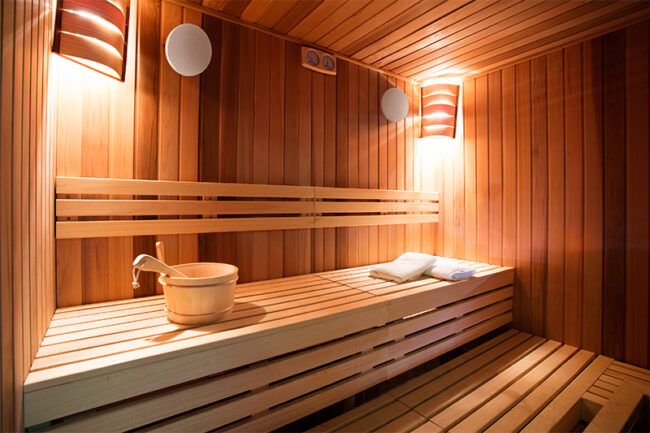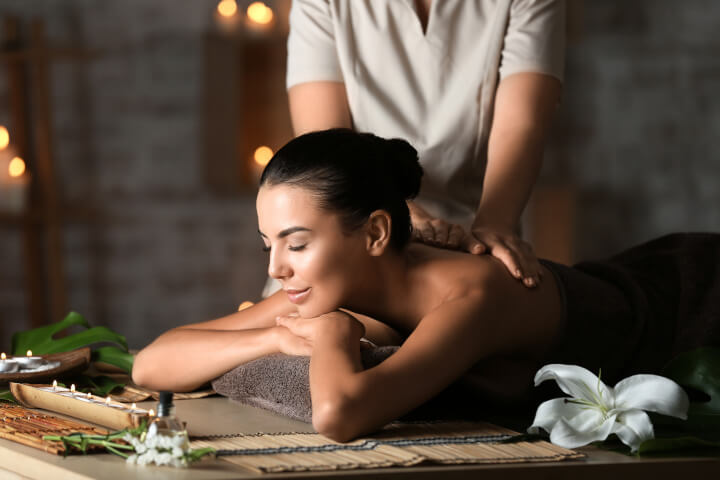
Music holds a profound influence over our emotions and mental state, a fact recognized since ancient times. Its ability to soothe the soul and interact positively with our psyche has led to the development of music therapy, which utilizes sound as a rehabilitative, educational, and therapeutic tool.
In the context of spas and wellness centers, where clients seek comprehensive well-being, music becomes a vital component in promoting relaxation. By crafting a calming and stimulating atmosphere, the right musical selections can significantly enhance the overall experience. Therefore, curating appropriate playlists for these environments is crucial to provide clients with an optimal and memorable visit.
There are specialized services that many spas and wellness centers rely on, including true in-store radio solutions with ready-made playlists specifically designed for relaxing environments. One such service is MoosBox, which offers curated, fully licensed music and customizable scheduling to enhance the customer experience and reflect the brand’s identity.
The Influence of Music on Stress Levels and Relaxation
Music has the remarkable ability to evoke emotions, facilitate relaxation, and momentarily silence the world’s noise. Within a spa setting, it serves as a cornerstone for influencing stress and relaxation levels.
The selection of music in a spa is never arbitrary; it is purposefully chosen to promote client relaxation. These selections often vary based on specific treatments, times of day, or the particular environment within the facility.
Research has shown that certain sounds or melodies can reduce cortisol levels, commonly known as the stress hormone. By stimulating our subconscious, processing sound, and eliciting positive emotional responses, music can activate neural activity that produces beta-endorphins, the hormones associated with improved mood.

Selecting Relaxing Music for Spas and Wellness Centers
Choosing the appropriate music to create the ideal spa atmosphere involves straightforward criteria, primarily focusing on relaxation. Spa managers can utilize services that offer playlists with the necessary rights and licenses for public playback within their establishments.
However, crafting the perfect playlist for spas and wellness centers can be challenging. Partnering with reputable providers ensures access to music that is fully licensed and rights-cleared. These services offer a wide array of sounds conducive to tranquility and well-being, aligning with the serene environment clients expect in a spa.
Such platforms provide sounds that harmonize with a relaxing ambiance, featuring melodies designed to immerse clients in a calming atmosphere. It’s worth noting that different areas within a wellness center may require specific background music. With the right service, establishing tailored playlists for various zones becomes manageable, ensuring clients receive the best possible experience.
Incorporating Nature Sounds
Beyond traditional music, spas and wellness centers often enhance the immersive experience by incorporating nature sounds. These natural melodies are profoundly relaxing and amplify the calming effect on both body and mind, aiding clients in achieving a deep state of well-being.
Commonly utilized nature sounds include bird songs, rustling leaves, or flowing water. These elements connect individuals to a rural ambiance, awakening sensations of primordial serenity and fostering a profound sense of peace.
Creating Personalized Sound Zones for Maximum Effect
While background music may seem universal, personalization creates distinction. Within a spa, each zone may evoke different emotional or physical needs, whether it’s energizing post-treatment areas or calming massage rooms.
To elevate the sensory experience, managers should consider:
- Reception areas ─ Light ambient music with soft instrumentals to immediately signal relaxation upon entry.
- Treatment rooms ─ Low-frequency, slow-tempo tracks that match breathing rhythms and heart rate.
- Relaxation lounges ─ Natural ambient blends like gentle rain or ocean waves to transition clients between treatments.
- Fitness or hydrotherapy zones ─ Slightly upbeat, yet soothing tracks that promote movement without disrupting peace.
By tailoring each auditory environment, spas promote continuity of relaxation across all touchpoints.

Practical Tips for Implementing Music Strategically
Integrating music into your spa doesn’t end at pressing play. These practical recommendations help ensure consistency and impact:
- Invest in quality speakers ─ Even the best playlist falls flat with poor acoustics, position speakers where sound flows without harshness.
- Sync music with lighting and scent ─ Coordinating soft lighting and aromatherapy with background music multiplies the soothing effect.
- Schedule playlist rotations ─ Morning and evening sessions should differ to reflect circadian rhythms and client moods.
- Monitor volume levels ─ Maintain a consistent, low-medium volume, enough to be heard, but never intrusive.
- Regularly update content ─ Even tranquil music can feel stale; refresh selections monthly to avoid over-familiarity.
The Science Behind Spa Music Choices
Spa music isn’t randomly plucked from soothing tracks, it’s often rooted in acoustic psychology. Tempo, pitch, rhythm, and timbre all play specific roles:
|
Element of Music |
Psychological Impact |
| Tempo (60–80 bpm) | Mimics resting heart rate, inducing calm |
| Low Frequencies | Grounding, stabilizing; lowers stress |
| Instrumental Sounds | Reduces cognitive load, ideal for meditative focus |
| Nature Integration | Reinforces primal safety and comfort cues |
| Minor Keys | Foster introspection, useful for deeper treatments |
Understanding this science enables spa owners to be more intentional in their musical decisions, delivering both comfort and physiological benefit.
Enhancing Brand Identity Through Signature Sound
Music also plays a vital role in reinforcing a spa’s brand identity. Clients associate feelings with places, and sound acts as a strong emotional trigger.
Developing a recognizable soundscape can become a subtle but powerful branding tool. For example:
- A luxury spa may use classical or neo-soul piano pieces to evoke elegance.
- Nature-themed spas benefit from acoustic folk or forest ambiences.
- Holistic or Eastern-inspired spas may employ sitar, Tibetan bowls, or wind chimes.
Consistency across locations (for spa chains) strengthens this sonic branding and makes the spa more memorable in the minds of returning guests.

Addressing Client Preferences and Cultural Sensitivity
Not all clients perceive music the same way. Some may find certain tones soothing, while others may associate them with discomfort. For this reason, cultural sensitivity and personalization matter.
Spas should consider offering:
- Customizable playlist options ─ Let frequent guests choose between curated themes, Ocean Calm, Forest Whisper, Zen Temple, etc.
- Opt-out options ─ For clients with sensory sensitivities or auditory disorders, silence may be preferred. Always respect these preferences.
- Cultural balance ─ Avoid overly ethnicized or stereotypical music unless it authentically fits your spa’s branding or philosophy.
In doing so, spas remain inclusive and better connected to their clientele.
Conclusion
Music in spas is more than background ambiance, it’s a deliberate, therapeutic element that supports both emotional and physical relaxation. It shapes the environment, enhances treatments, and amplifies client satisfaction. With the growing demand for wellness experiences that cater to all senses, carefully selected music becomes a strategic advantage.
By partnering with expert services, understanding acoustic psychology, and tailoring sound environments with intention, spa professionals can cultivate spaces that not only relax but also inspire lasting loyalty and inner peace. Ultimately, music in spas is not just heard; it is deeply felt.
